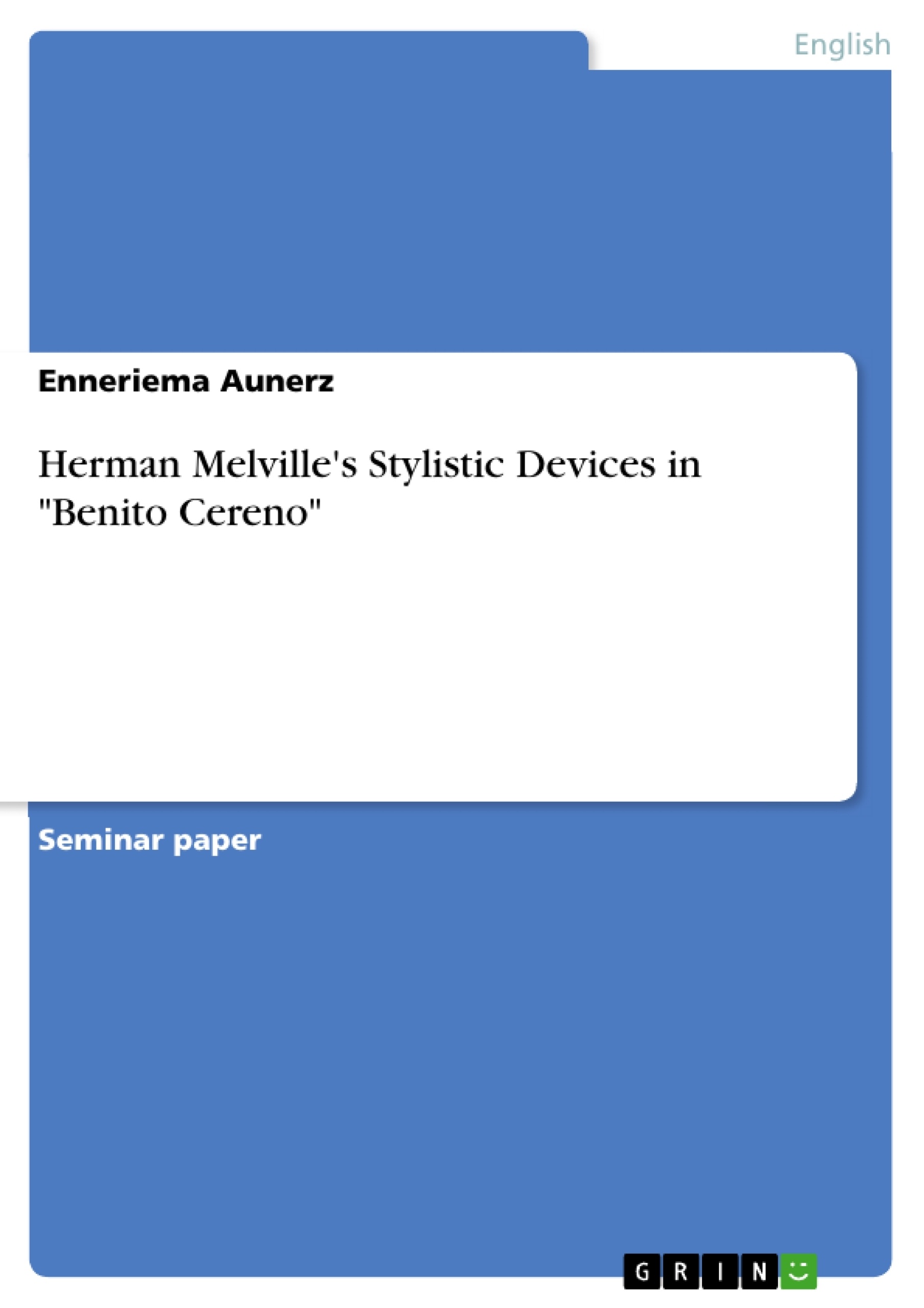Herman Melville´s novel "Benito Cereno" was published 1856 in "The Piazza Tales". It based on a real-life incident described in Amasa Delano´s "Narrative of Voyages and valley in the Northern and Western Hemispheres" (1817). Relying on the source for the basic plot, Melville added a few additions to transform the factual report in a cryptic narrative relevant for readers of the 1850s. This term paper deals with the question of how the author deals with certain issues and why.
Inhaltsverzeichnis (Table of Contents)
- Introduction
- Stylistic Devices
- Mood and Interpretation
- Finding Melville's Truth...
- Summary
Zielsetzung und Themenschwerpunkte (Objectives and Key Themes)
This term paper examines the stylistic devices used by Herman Melville in his novel *Benito Cereno* and explores how these devices contribute to the novel's overall message. The paper aims to analyze the author's intent in using these stylistic choices and to demonstrate how they influence the reader's interpretation of the events and characters.
- The role of stylistic devices in creating mood and ambiguity
- The use of imagery and symbolism to evoke specific feelings and impressions
- The interplay of subjective perception and objective reality
- The themes of power, deception, and the nature of truth
- The influence of gothic literary conventions on Melville's style
Zusammenfassung der Kapitel (Chapter Summaries)
The introduction provides context for Melville's *Benito Cereno*, highlighting its publication shortly before the American Civil War and its reliance on a real-life incident. It discusses the challenges of understanding the novel's message due to Melville's use of metaphor and symbolism, encouraging the reader to actively interpret the events of the story.
The chapter on "Stylistic Devices" explores various techniques used by Melville, emphasizing their ability to shape the reader's experience. It begins by examining the use of mood and imagery to create an atmosphere of suspense and uncertainty, drawing parallels to gothic literature. The chapter also discusses the importance of ambiguity and how it prompts the reader to consider multiple interpretations of the events.
The "Mood and Interpretation" section delves deeper into the novel's opening scene, analyzing the evocative language and imagery used to create a sense of unease and foreboding. The chapter also examines the role of ambiguity in shaping the reader's understanding of the characters and events.
Schlüsselwörter (Keywords)
The key terms and concepts explored in this paper include: stylistic devices, mood and interpretation, imagery, symbolism, ambiguity, gothic literature, perception, reality, power, deception, and truth.
- Quote paper
- Enneriema Aunerz (Author), 2011, Herman Melville's Stylistic Devices in "Benito Cereno", Munich, GRIN Verlag, https://www.grin.com/document/449846



